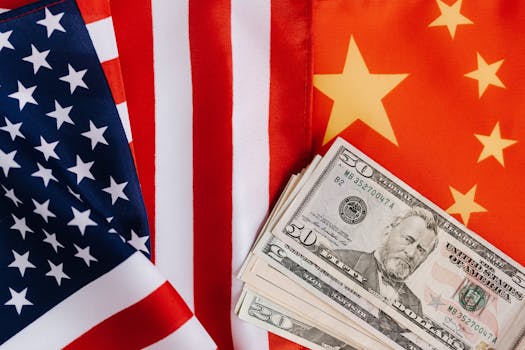
**
China-US Trade Deal: Key Details Confirmed, Implications for Global Economy
The long-awaited confirmation of details regarding a revised trade agreement between China and the United States has sent ripples through the global economy. After months of negotiations, characterized by escalating tariffs and trade wars, both nations have finally released specifics regarding the Phase One deal. This development carries significant implications for businesses, investors, and consumers worldwide, impacting everything from agricultural exports to intellectual property protection. Understanding the nuances of this agreement is crucial for navigating the evolving landscape of international trade.
Key Provisions of the China-US Trade Deal: A Detailed Overview
The finalized agreement, often referred to as the “Phase One” trade deal, focuses on several key areas. While not resolving all trade disputes, it represents a significant step towards de-escalation and establishes a framework for future negotiations.
Increased US Agricultural Exports to China
One of the most significant aspects of the deal involves a substantial increase in agricultural purchases by China from the US. China has committed to purchasing a minimum of $36.5 billion worth of US agricultural products annually. This includes a wide range of goods, from soybeans and corn to pork and dairy products. This commitment is a major win for American farmers, many of whom have suffered under the weight of tariffs imposed during the trade war. The impact on the agricultural sector is likely to be considerable, boosting farm incomes and supporting rural economies.
- Soybean Exports: China's commitment includes a substantial increase in soybean imports, a key commodity for US farmers.
- Pork Purchases: With African Swine Fever decimating China's pig population, increased pork imports from the US are expected to alleviate shortages and stabilize prices.
- Dairy Products: Increased demand for US dairy products will provide a boost to the dairy industry, supporting jobs and economic growth in dairy-producing regions.
Intellectual Property Rights Protection
The agreement also places a strong emphasis on the protection of intellectual property rights (IPR). China has committed to strengthening its legal framework and enforcement mechanisms to combat counterfeiting and piracy. This is a crucial element for US businesses operating in China, as it safeguards their innovations and prevents the theft of valuable technology.
- Patent Protection: The deal aims to improve the protection of patents, ensuring that US companies receive adequate legal recourse against infringement.
- Trademark Enforcement: Stronger enforcement measures are in place to protect trademarks, reducing the incidence of counterfeit goods flooding the market.
- Copyright Protection: Measures to enhance copyright protection are expected to deter the illegal reproduction and distribution of copyrighted material.
Financial Services and Market Access
The agreement addresses improvements in market access for US financial services companies in China. While specific details remain somewhat vague, it signifies a commitment to opening up the Chinese financial sector, granting greater opportunities for US firms to compete in the rapidly expanding Chinese market. This has significant implications for US financial institutions looking to expand their global footprint.
- Increased Access for US Banks: US banks are anticipated to gain greater access to the Chinese market, allowing them to expand their operations and serve Chinese clients.
- Investment Opportunities: The agreement may unlock new investment opportunities for US financial institutions in China's growing financial sector.
- Regulatory Reforms: China has committed to undertaking further regulatory reforms to create a more open and competitive financial services market.
Economic Implications and Global Impact of the China-US Trade Deal
The China-US trade deal has far-reaching economic implications, affecting not only the two countries involved but also the global economy as a whole. The reduced trade tensions are expected to foster greater global economic stability. Reduced uncertainty could lead to increased investment, improved consumer confidence, and accelerated economic growth. However, concerns remain regarding the long-term sustainability of the deal and the potential for future disputes.
Impact on Global Supply Chains
The deal's impact on global supply chains will be significant. The reduction in tariffs and the increased predictability of trade relations should lead to smoother and more efficient supply chains. This is beneficial for businesses operating across borders, allowing them to reduce costs and improve their competitiveness.
Global Market Volatility
While the deal aims to reduce market volatility, uncertainty remains. The Phase One nature of the agreement leaves room for future negotiations and potential disagreements. Therefore, it's crucial to monitor developments closely to gauge the long-term impact.
Future Negotiations and Potential Challenges
The deal's success depends heavily on the commitment of both sides to uphold their obligations. Future negotiations will address remaining trade disputes and potential areas of contention. Continuous monitoring of developments is crucial to assess the long-term implications of this significant agreement.
Keywords: China-US trade deal, Phase One trade deal, US-China trade war, trade tariffs, agricultural exports, intellectual property rights, market access, global economy, soybean exports, pork imports, dairy products, financial services, investment opportunities, supply chains, global trade, economic implications, bilateral trade agreement.


















